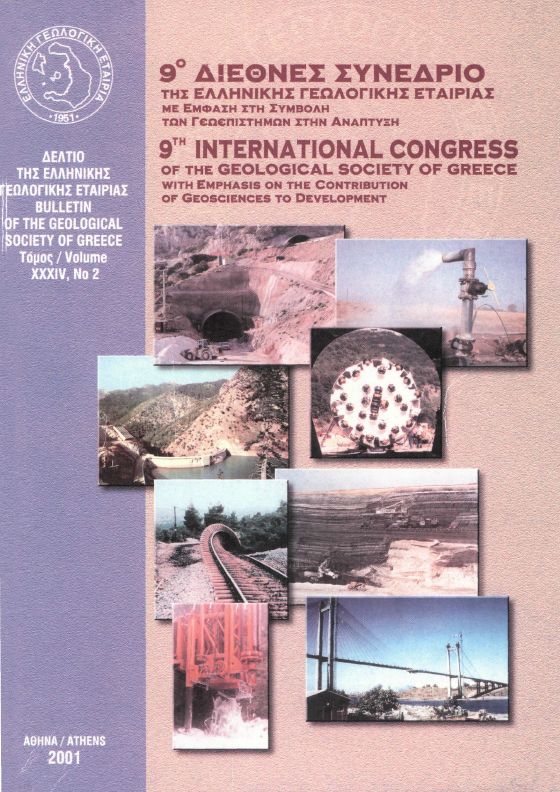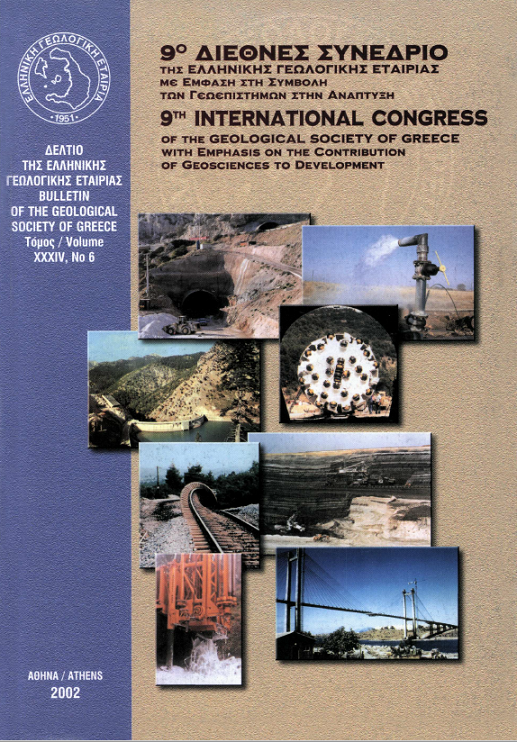FORAMINIFERAL RECORD OF ENVIRONMENTAL CHANGES: PREEVAPORITIC DIATOMACEOUS SEDIMENTS FROM GAVDOS ISLAND, SOUTHERN GREECE.
Abstract
The Messinian pre-evaporitic sedimentary succession of Gavdos island (Metochia section) is a nearly uninterrupted succession of marine sediments, dominated by finely laminated diatomaceous sediments, which are cyclically alternating with marlstone and white limestone beds. The purpose of this study is to analyze in detail the benthic and planktonic foraminiferal microfauna preserved in the sediments of this section. The qualitative and quantitative analysis of the planktonic foraminifera fauna allowed the recognition of seven bioevents, which have been astronomically dated for the Mediterranean. The base of the diatomitic succession in Gavdos Island is dated at 6.696 Myr, whereas its top at 6.0 Myr. Our results suggest that two environmental parameters are the most important factors that control the community structure of the benthic foraminiferal fauna: the food availability and oxygen concentration. In addition, local upwelling phenomena evidenced by signals from the benthic foraminifera and the distribution pattern of the planktonic G. bulloides may have played a role in the faunal density and composition
Article Details
- How to Cite
-
Drinia, H., Antonarakou Α., Tsaparas, N., Dermitzakis, M. D., & Kontakiotis, G. (2018). FORAMINIFERAL RECORD OF ENVIRONMENTAL CHANGES: PREEVAPORITIC DIATOMACEOUS SEDIMENTS FROM GAVDOS ISLAND, SOUTHERN GREECE. Bulletin of the Geological Society of Greece, 36(2), 782–791. https://doi.org/10.12681/bgsg.16817
- Section
- Paleontology

This work is licensed under a Creative Commons Attribution-NonCommercial 4.0 International License.
Authors who publish with this journal agree to the following terms:
Authors retain copyright and grant the journal right of first publication with the work simultaneously licensed under a Creative Commons Attribution Non-Commercial License that allows others to share the work with an acknowledgement of the work's authorship and initial publication in this journal.
Authors are able to enter into separate, additional contractual arrangements for the non-exclusive distribution of the journal's published version of the work (e.g. post it to an institutional repository or publish it in a book), with an acknowledgement of its initial publication in this journal. Authors are permitted and encouraged to post their work online (preferably in institutional repositories or on their website) prior to and during the submission process, as it can lead to productive exchanges, as well as earlier and greater citation of published work.







